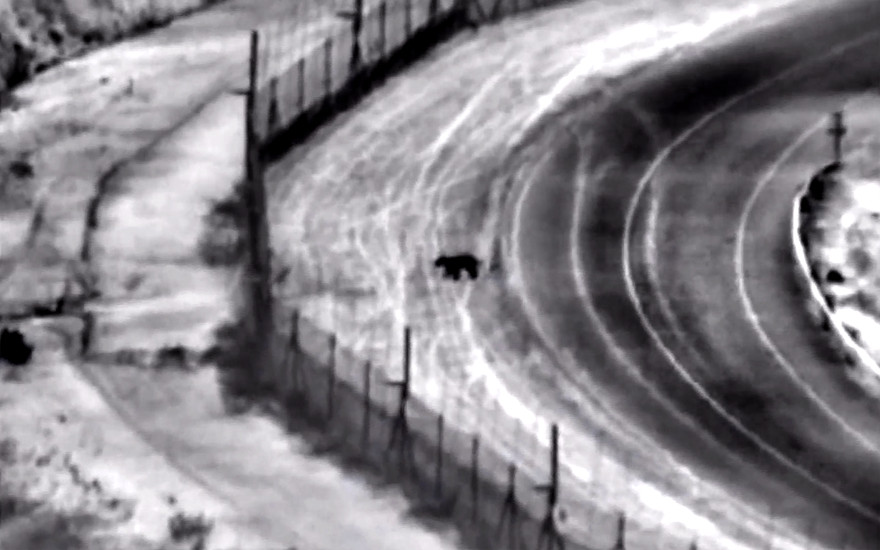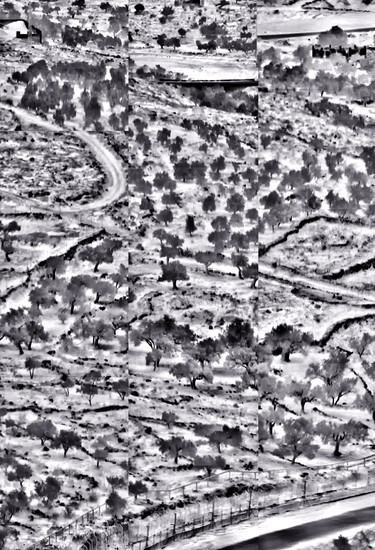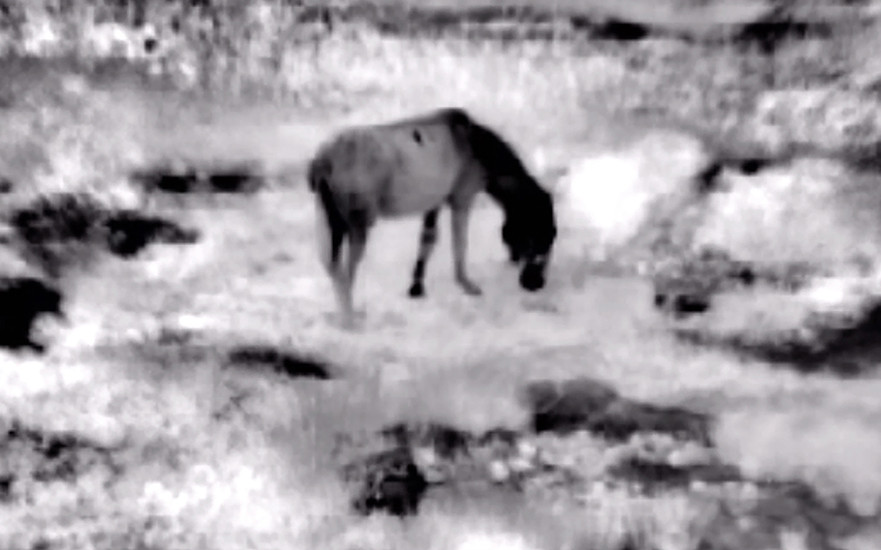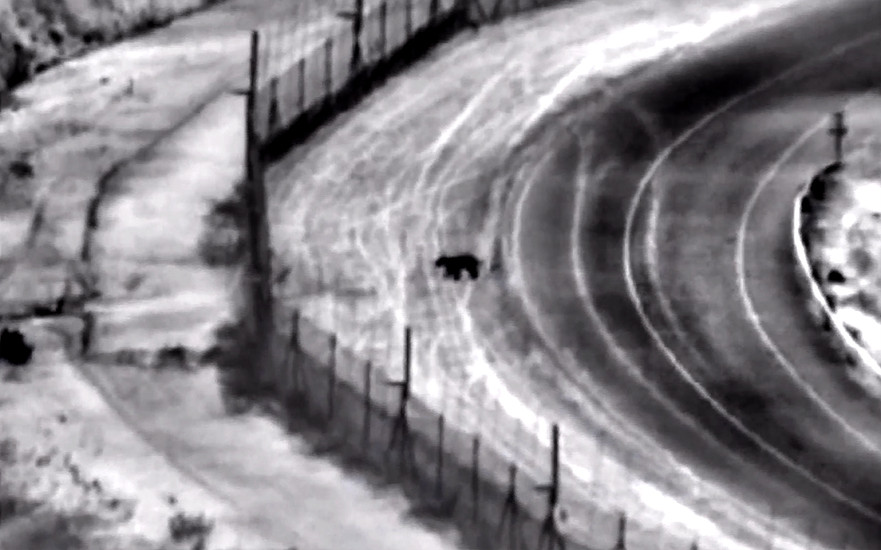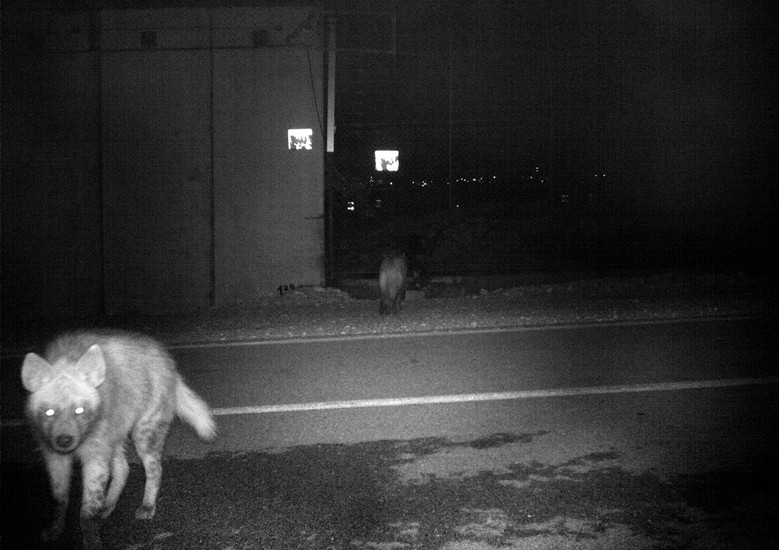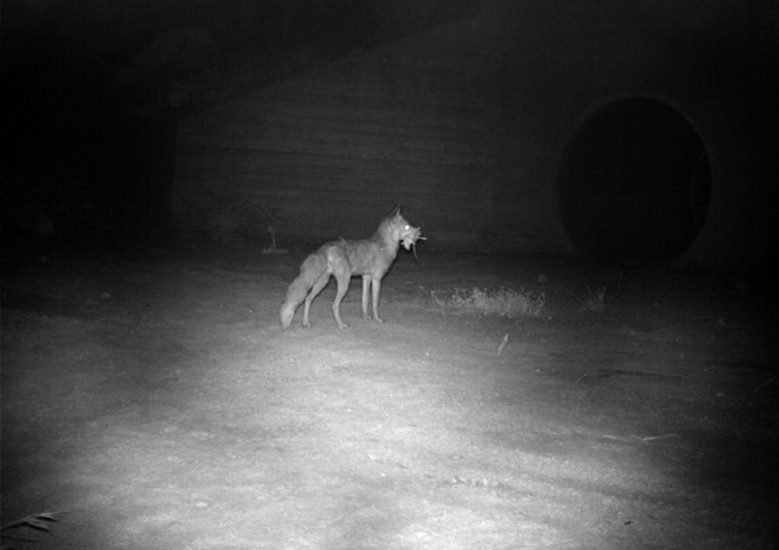Crossline
Netta Laufer
Netta Laufer: The Animal and the Territory
Hagi Kenaan
"Good morning," the little prince responded politely, although when he turned
around he saw nothing.
أنا هنا تحت شجرة التفاح the voice said.
"Who are you?" asked the little prince, and added, "You are very pretty to look at."
أنا ثعلبsaid the fox.
Background: In her work Netta Laufer enters a familiar conflict zone, one that we rather forget. Laufer places herself next to the separation fence, some twenty years in construction and by now a political fact and integral part of Israeli political imagination. Responsibility for its existence falls also on those who oppose it. Laufer’s medium is photography, but the photographs and video in the exhibition were not taken by her. She uses materials captured on IDF (thermal) security cameras as well as trail cameras (with movement sensors) and Google Earth surveillance cameras as part of her collaboration with Israel’s Nature and Parks Authority. As a first characterization, Laufer’s artistic move consists of an intervention. Yet what is the nature of this intervention? What can art offer within a political situation it is unable to change?
Position: Between mountain ranges – boulders, olive trees, terraces, faraway village houses – a borderline that isn’t quite a line but a space of political-military separation, a “seamline”: An electric security fence, dust roads and patrolling lanes, barbed wire, obstacle canal, intrusion detection and control systems, remote-control weapons, sensors, detectors and cameras that together create a monitored sensorial space. Laufer investigates the visual territory erected here and reveals that despite the rigorous monitoring of the area, there exists a life with its own force and dynamics in the seam between the mountain ranges. Nature was severely harmed by the construction of the fence, yet life in it, even if changed, continues its autonomous path, despite the barriers, detectors and cameras. Animals live in this area, indifferent to military law, oblivious to the political, moral, economic and ecological meanings of the fence. The animals are ignorant of the term “separation fence,” and when they run into the fence or any other obstacle that hinders their movement, they busy themselves finding specific solutions to continue their way, with varying degrees of success.
Visual territory: Laufer’s works offer a double gaze at the visual territory created by the seamline. They expose the workings of the controlling mechanisms and their “division of the sensory” within the territory – what is granted or denied visual value – the law of thumb being: only that which has clear security value is registered in the visual field; and thus, the richness of the life transpires in the photographed space is erased from visual consciousness, especially, as Laufer shows us, the lives of animals, particularly wild animals, whose movement and everyday dealings unfold in front of the security cameras yet lack any kind of “visual status”: wild boars, panthers, foxes, porcupines, hyenas, does, partridges, rock hyraxes, and also dogs, cats and horses. Here, however, is exactly where Laufer’s surgical intervention comes into play, with her sophisticated editing of the military visual footage she overturns its values so that the existence of the animals in the territory becomes key. Laufer isn’t satisfied working with the raw military material alone (the 25 ft series), she also brings into the territory – in collaboration with the Nature and Parks Authority – external cameras that document the animals; cameras that challenge the complete control of the military eye over the area. Thus, by stubbornly insisting on the possibility of being involved in determining the visual character of the territory, Laufer reestablishes the innocent, voiceless existence of the animals. She renders the life of animals visible, “puts them on the map,” recognizes them as indigenous, autochthonous, creatures and, on the visual level, grants them full citizenship in the territory. In this respect, Laufer de-territorializes the visual – to use Deleuze and Guattari – creating a counter expropriation and a dissolution of the cohesion of the visual that is always already anchored to a specific political constellation. This move might not have an immediate effect on the hard core of the political situation. Yet, in offering a persuasive alternative to the visual imagination of the sovereign, this artistic action consists in an important reminder of the possibility of dissolving the dominant visual regime and of charting new paths of visual life.

